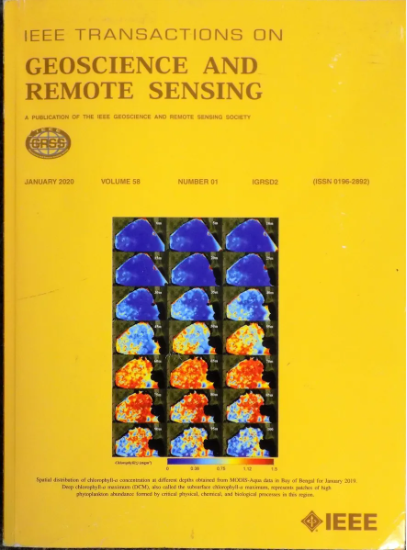用于区间 Q 反演的物理驱动神经网络
IF 7.5
1区 地球科学
Q1 ENGINEERING, ELECTRICAL & ELECTRONIC
IEEE Transactions on Geoscience and Remote Sensing
Pub Date : 2024-09-27
DOI:10.1109/TGRS.2024.3469639
引用次数: 0
摘要
品质因数(Q 值)估算对处理非稳态地震数据至关重要,是油气的重要指标。传统的 Q 值估计方法需要识别每个恒定 Q 层的顶部和底部,这在处理野外地震数据时具有挑战性。基于深度学习(DL)的Q值反演方法利用深度网络强大的非线性拟合能力,直接从输入的地震数据中自动获得区间Q值估计。然而,这些方法具有所谓的 "黑箱 "特性,缺乏可解释性,从而限制了其实际应用。为了解决这些问题,本研究提出了一种物理驱动神经网络(PDNN),它将物理知识与深度神经网络相结合,将计算 Q 值的移频方法嵌入到网络的计算层中。我们的方法使用非稳态地震信号及其相应的对数时频振幅谱(LTFAS)作为输入。神经网络将动态小波和反射系数解耦,从而获得动态小波的 LTFAS。此外,还设计了一个基于移频法的网络层,以生成区间 Q 曲线。对合成数据和实地数据的实验表明,受物理知识约束的神经网络可以缓解区间 Q 值计算的不稳定性,得到更稳定的 Q 值估计值。此外,这种方法还增强了 DL 方法的可解释性和概括能力,具有重要的实用价值。本文章由计算机程序翻译,如有差异,请以英文原文为准。
Physics-Driven Neural Network for Interval Q Inversion
Quality factor (Q) estimation is critical for the processing of nonstationary seismic data and is an important indicator of oil and gas. Traditional methods for Q value estimation require the identification of the top and bottom of each constant Q layer, which can be challenging in the processing of field seismic data. Deep-learning (DL)-based Q inversion methods leverage the powerful nonlinear fitting capabilities of deep network to automatically obtain interval Q estimates directly from the input seismic data. However, these methods possess so-called “black box” characteristics and lack interpretability, thereby limiting their practical application. To address these issues, this study proposes a physics-driven neural network (PDNN) that integrates physical knowledge with deep neural networks, embedding the frequency-shift method for Q value calculation into the computational layers of the network. Our approach uses nonstationary seismic signals and their corresponding logarithmic time-frequency amplitude spectrum (LTFAS) as input. The neural network decouples the dynamic wavelets and reflection coefficients to obtain the LTFAS of dynamic wavelets. Furthermore, a network layer is designed based on the frequency-shift method to generate the interval Q curve. Experiments on both synthetic and field data demonstrate that the neural network constrained by physical knowledge can alleviate the instability in interval Q calculations, yielding more stable Q estimates. Additionally, this approach enhances the interpretability and generalization capabilities of DL methods, offering significant practical value.
求助全文
通过发布文献求助,成功后即可免费获取论文全文。
去求助
来源期刊

IEEE Transactions on Geoscience and Remote Sensing
工程技术-地球化学与地球物理
CiteScore
11.50
自引率
28.00%
发文量
1912
审稿时长
4.0 months
期刊介绍:
IEEE Transactions on Geoscience and Remote Sensing (TGRS) is a monthly publication that focuses on the theory, concepts, and techniques of science and engineering as applied to sensing the land, oceans, atmosphere, and space; and the processing, interpretation, and dissemination of this information.
 求助内容:
求助内容: 应助结果提醒方式:
应助结果提醒方式:


